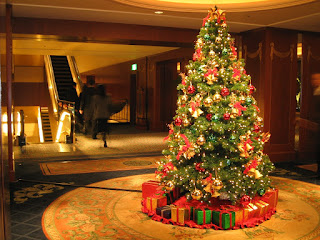What is Christmas?
Here I have investigated into what Christmas actually is, where it originated from and the traditions that are still ongoing or have been lost over the decades. As my brief is to de-commercialise Christmas and encourage people to come together for quality time and keep up old traditions I thought this was a good direction to start off my research. As the main focus at Christmas is Santa Claus, Christmas trees and gift giving I have found from various sources of other traditions that used to be important and appreciated back when people could not afford to be so extravagant at gift giving.
Web research:
Source: http://wuwm.com/post/5-christmas-traditions-centuries-old-origins#stream/0
Christmas greenery:
Source: http://www.lifeway.com/Article/Christmas-traditions-rooted-in-ancient-culture
Christmas festivities often include the hanging of the greens. Christmas trees, mistletoe, holly, and poinsettias grace homes, businesses, and churches.
Many traditions involving greenery originated in Druid, Celt, Norse, and Roman civilizations, which celebrated the winter solstice around December 21. Because the colour green represented eternal life, plants that remained green throughout the year played an important role in these celebrations.
The Romans celebrated the solstice with a mid-winter holiday called the Saturnalia, honouring the Roman god Saturn. They lit candles in their homes, spent time with friends and family, decorated their homes with wreaths and garlands, exchanged gifts, and feasted.
As pagan cultures converted to Christianity, they continued many of their traditional winter solstice activities. Because the use of greenery had pagan origins, early church leaders often objected to its use. However, the traditions were so deeply ingrained that the customs continued - but from a Christian frame of reference.
My analysis: After researching Christmas it is clear that the colour green has always been represented through different religions and cultures as a symbol for eternal life and strength/togetherness. This will be something I will use in my own work as in modern day society the colours red and green are still dominant throughout any christmas related piece of design. However I would like to find a different shade or tone of green which would represent the evolving times of christmas but still try to keep the traditional nostalgic colours that would hit both young and old target audiences.
Christmas Cards:
Source: http://www.lifeway.com/Article/Christmas-traditions-rooted-in-ancient-culture
The custom of sending Christmas cards probably began with the English "schoolpieces" or "Christmas pieces," simple pen-and-ink designs on sheets of writing paper. The first formal card was designed by an Englishman, J.C. Horsley, in 1843. It was lithographed on stiff, dark cardboard and depicted in color a party of grownups and children with glasses raised in a toast over the words "A Merry Christmas and a Happy New Year to you."
Americans relied on expensive imported Christmas cards until 1874, when Boston lithographer Louis Prang offered a selection of cards featuring reproductions of contemporary paintings with printed sentiments on the reverse side. Within 10 years, Prang's print shop was producing more than five million cards each year.

My Analysis: Having never researched into old christmas cards before this was very interesting to find. It was designed by an Englishman in 1843 called J.C Horsley. The visuals are of what looks like a family at a gathering all sharing a drink and enjoying one another's company. The other illustrations left and right to the centre image look like they're sharing food and giving gifts, more christmas traditions. As the livelihood will have been much lower than todays society, Christmas will have been more on togetherness and having a good time with your family, not just giving gifts. The card represents what christmas should be like, this is something I am keeping in mind when it comes to the outcome for my brief.
Source: http://www.whychristmas.com/cultures/uk.shtml













